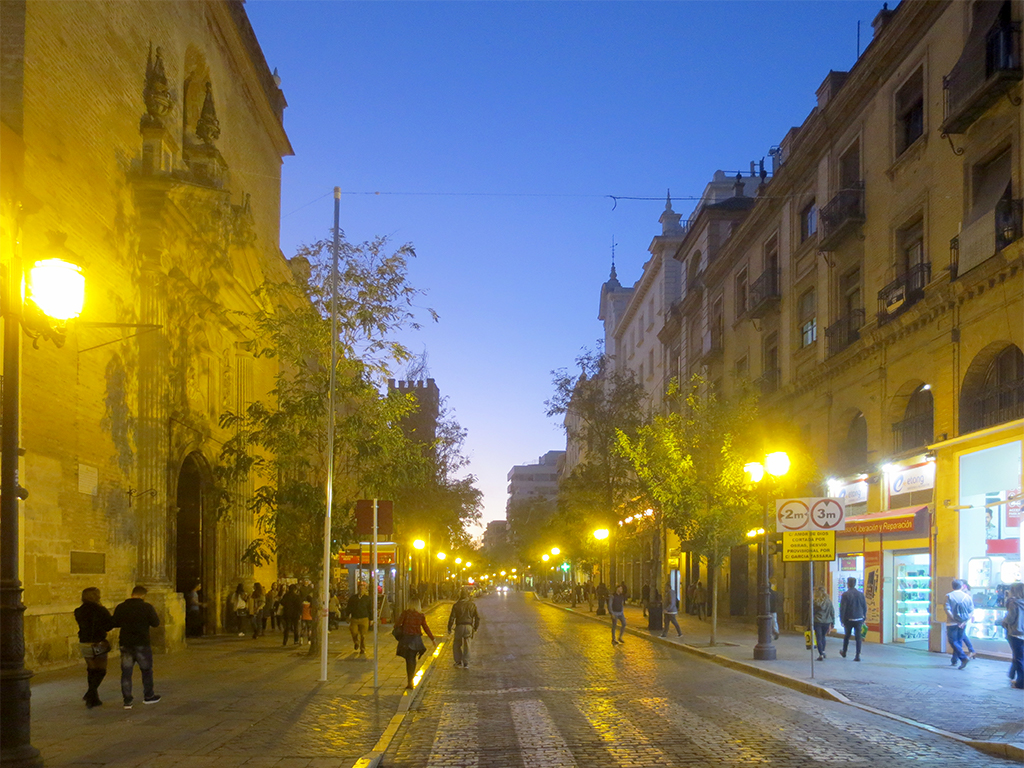Earlier this week we’d walked past the Metropol Parasol (commonly known as Las Setas — “The Mushrooms”) but tonight we paid our €3 fee and went up the elevator to the viewing platforms above.
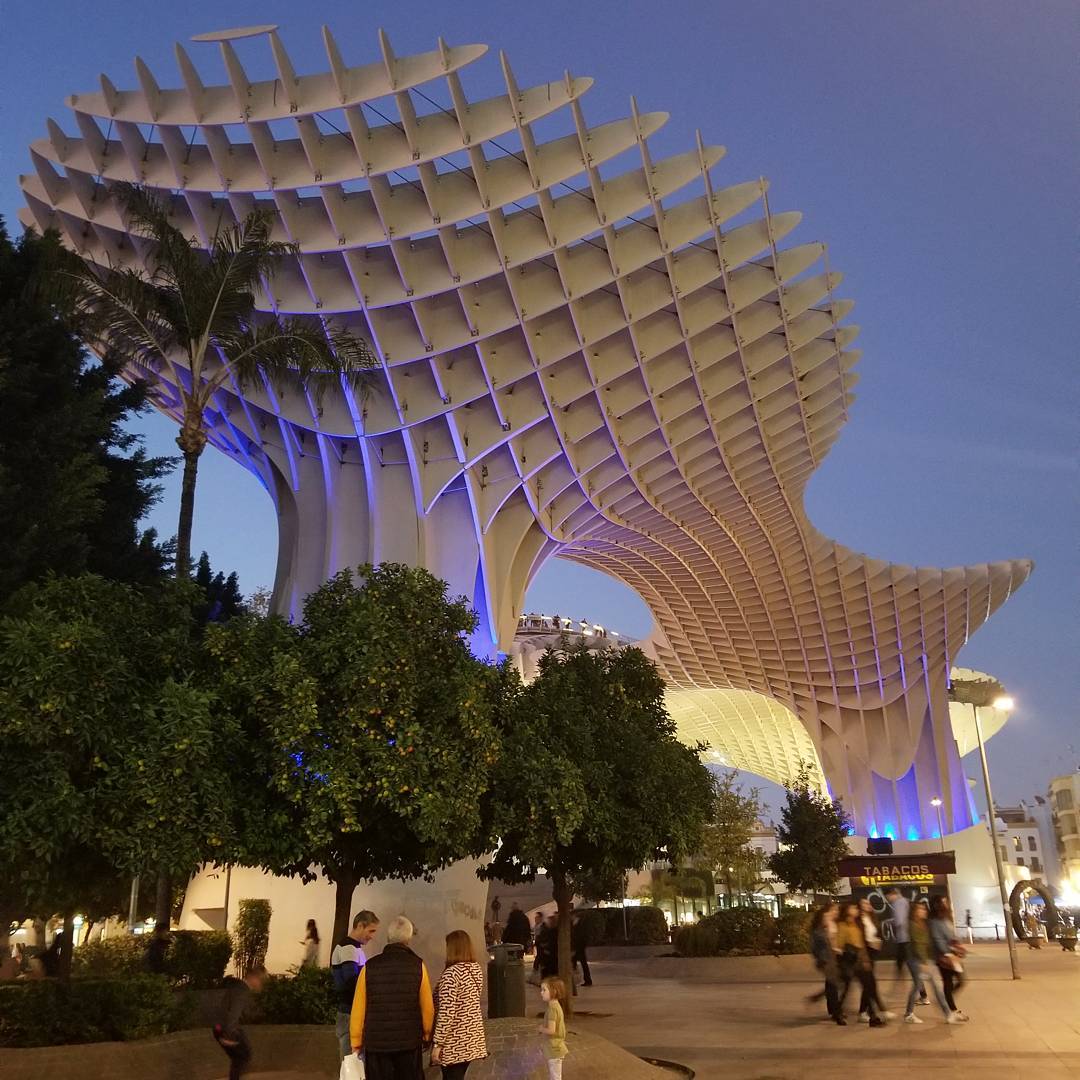
We timed our visit to coincide with the 6pm sunset, hoping for good views, and we were not disappointed.
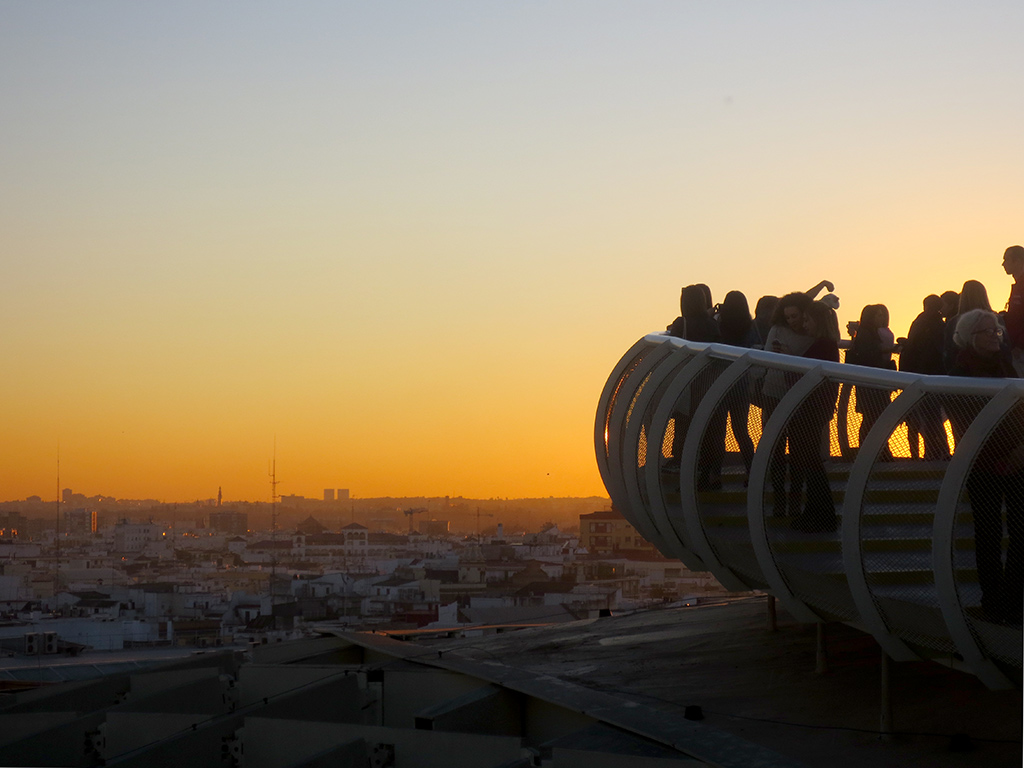
Once you exit the elevator onto the top level, you are free to circle the entire surface via a circuit of winding and twisting staircases that provide different views of the city every few steps.
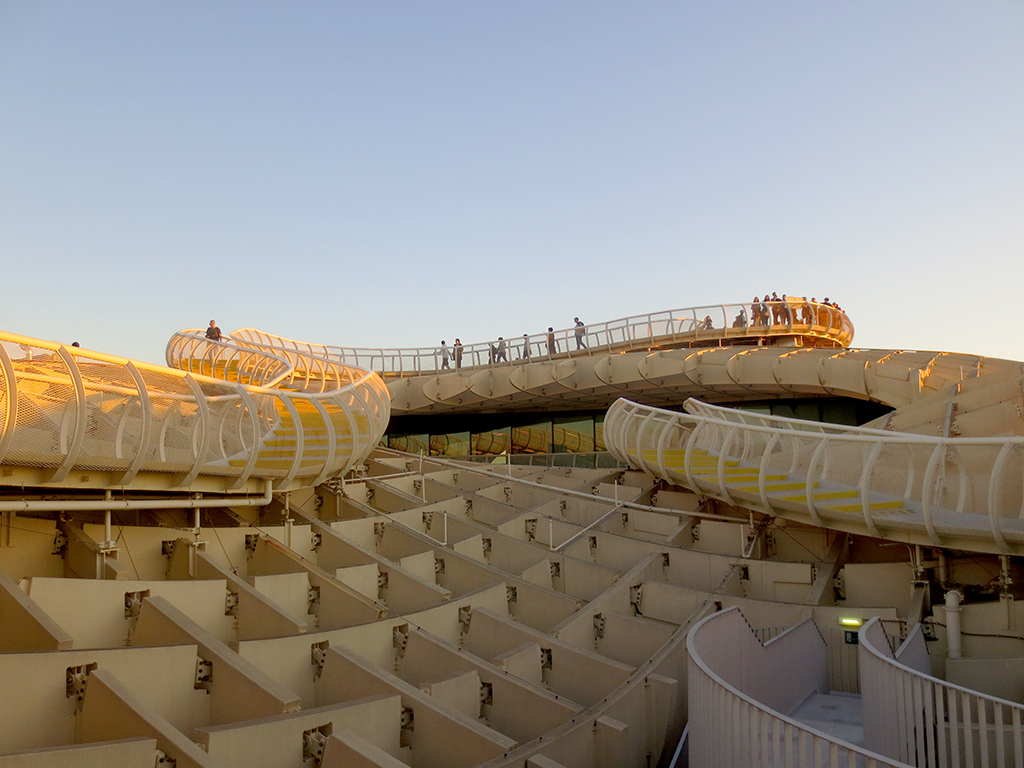
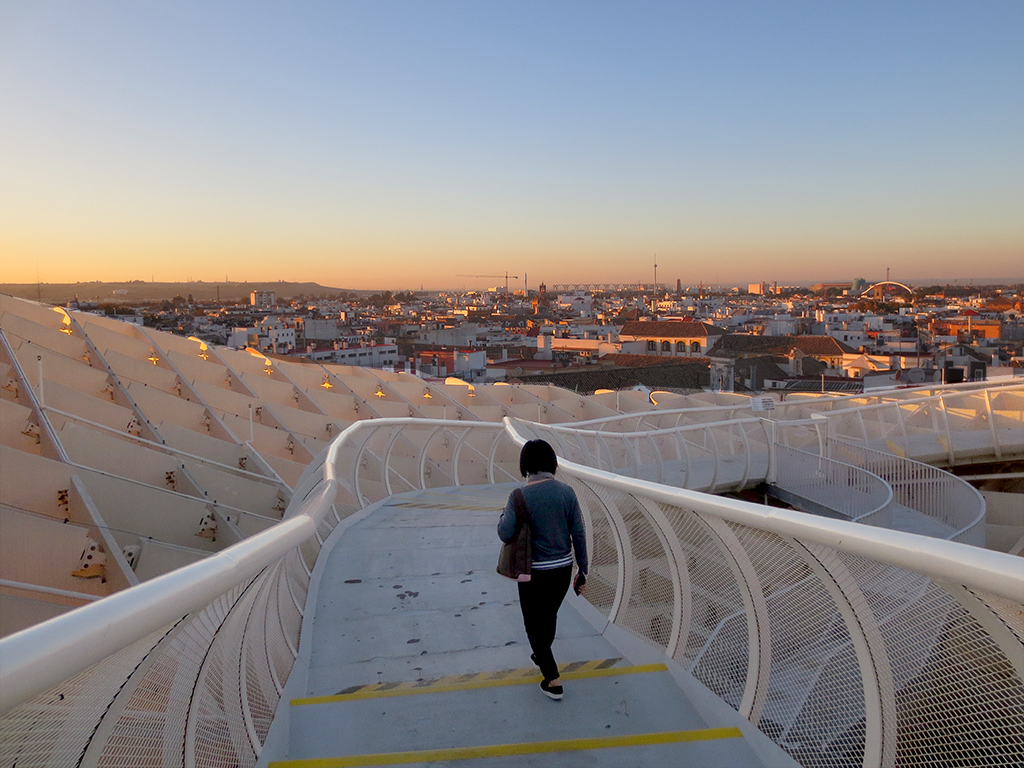
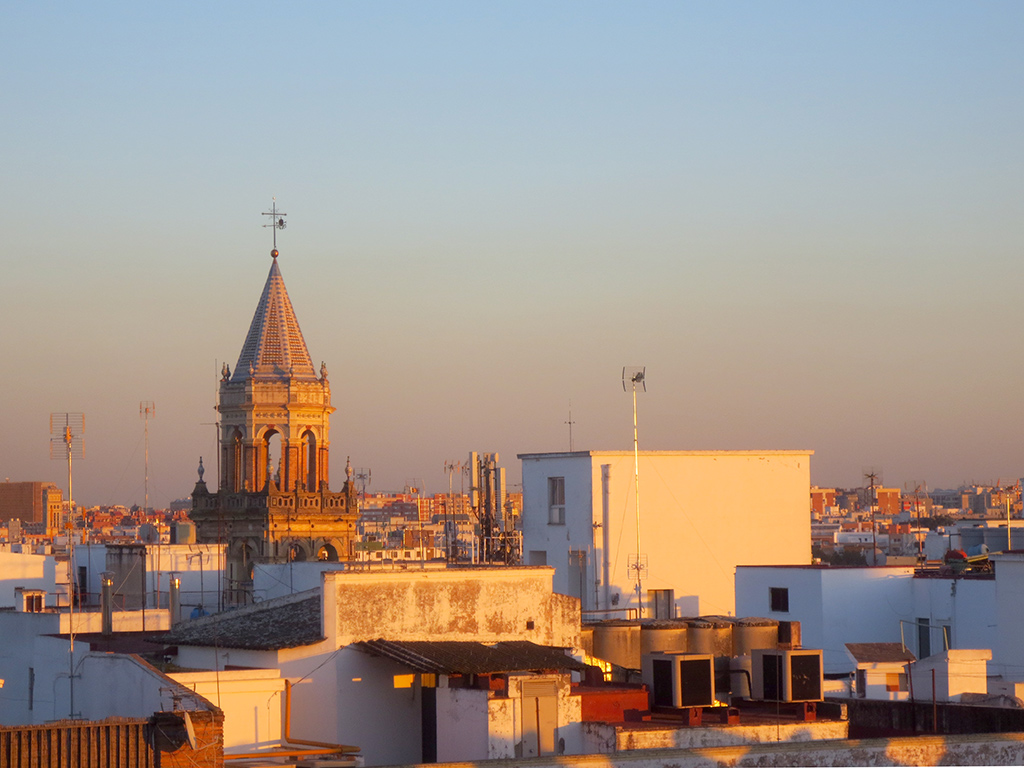
This being Seville, there is of course a small bar where you can purchase drinks and tapas, and your elevator ticket gets you a €1 discount on your first (albeit overpriced) drink.
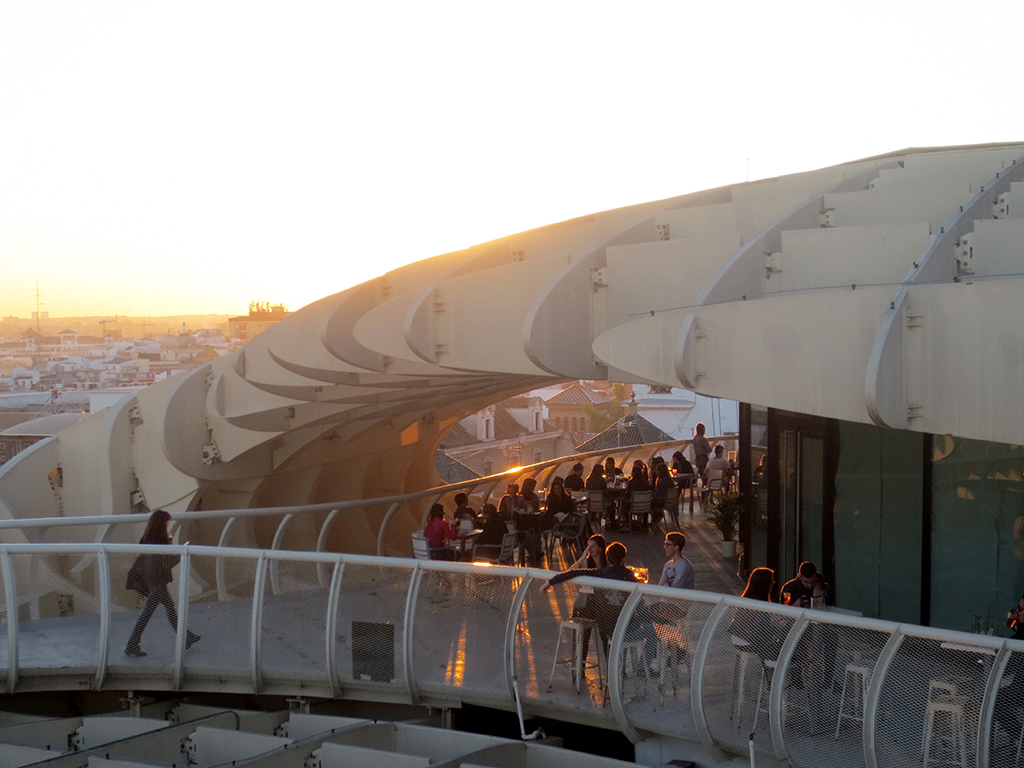
Beneath the Setas, in the basement where the elevator entrances are, we visited the Antiquarium, an impressive museum that shows off the in-situ ancient Roman and Moorish archeology that was found on the site when construction started.
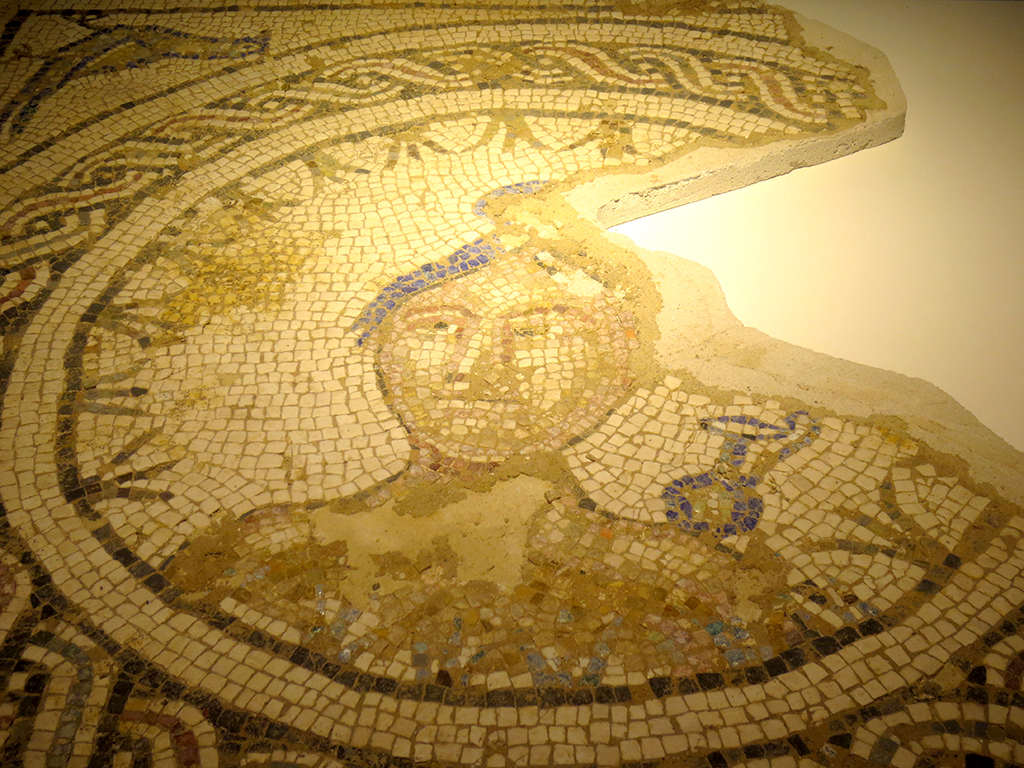
Admission to wander around and see the archeology was only €2 and it was nicely presented, with Spanish and English explanations and even video screens showing how parts were excavated, and what the buildings would have looked like roughly 1,500 years ago.
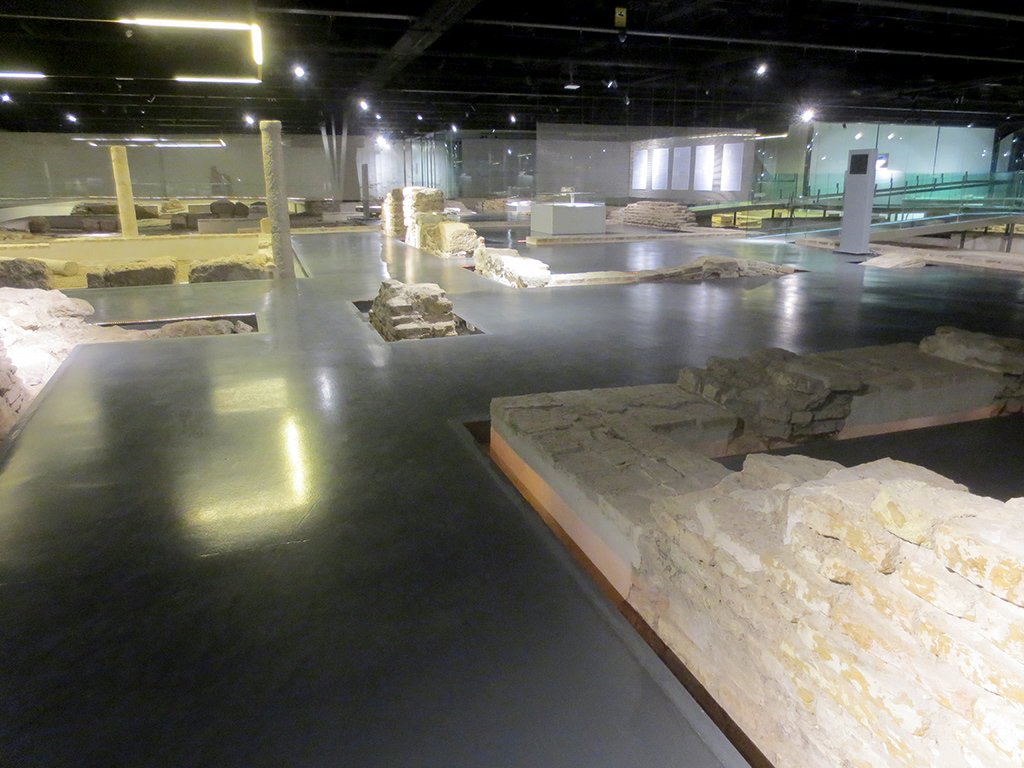
We immediately recognized these pits the Romans used for salting and fermenting fish and “garum” from our visit to a similar archeological site in Lisbon earlier this year.
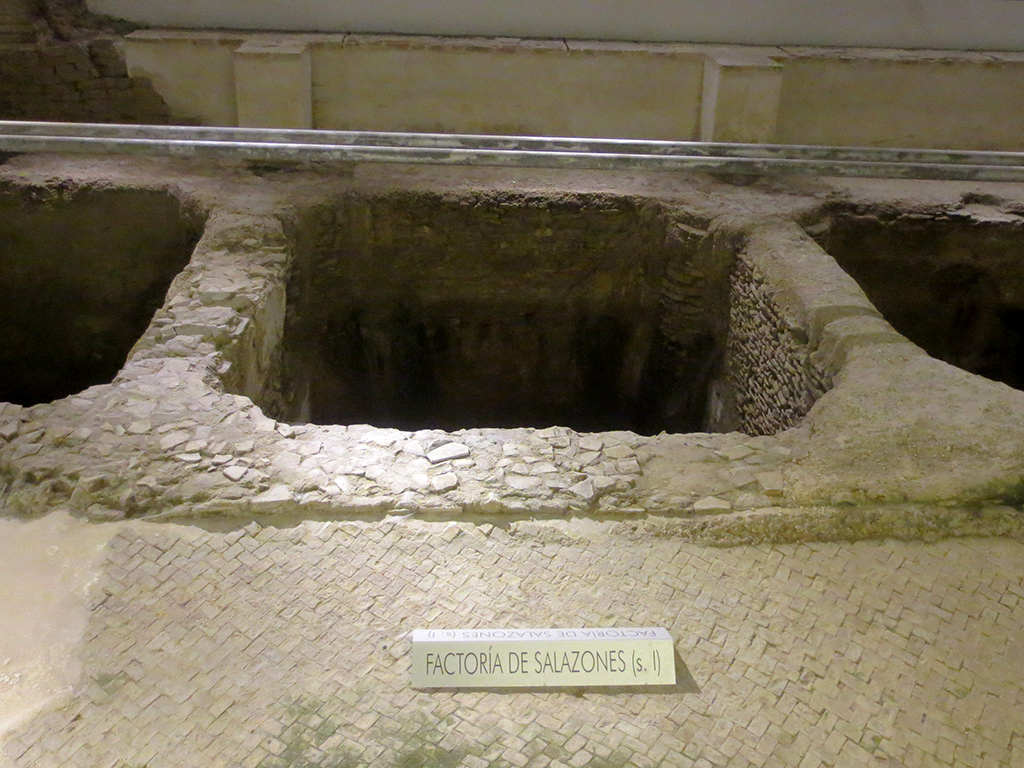
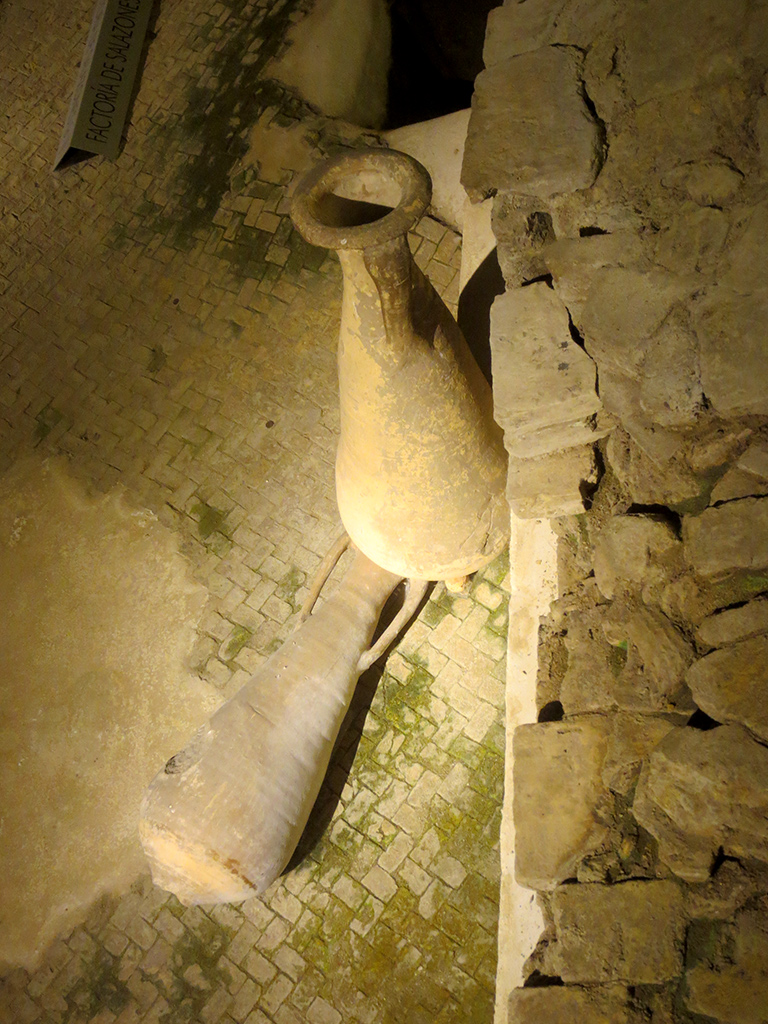
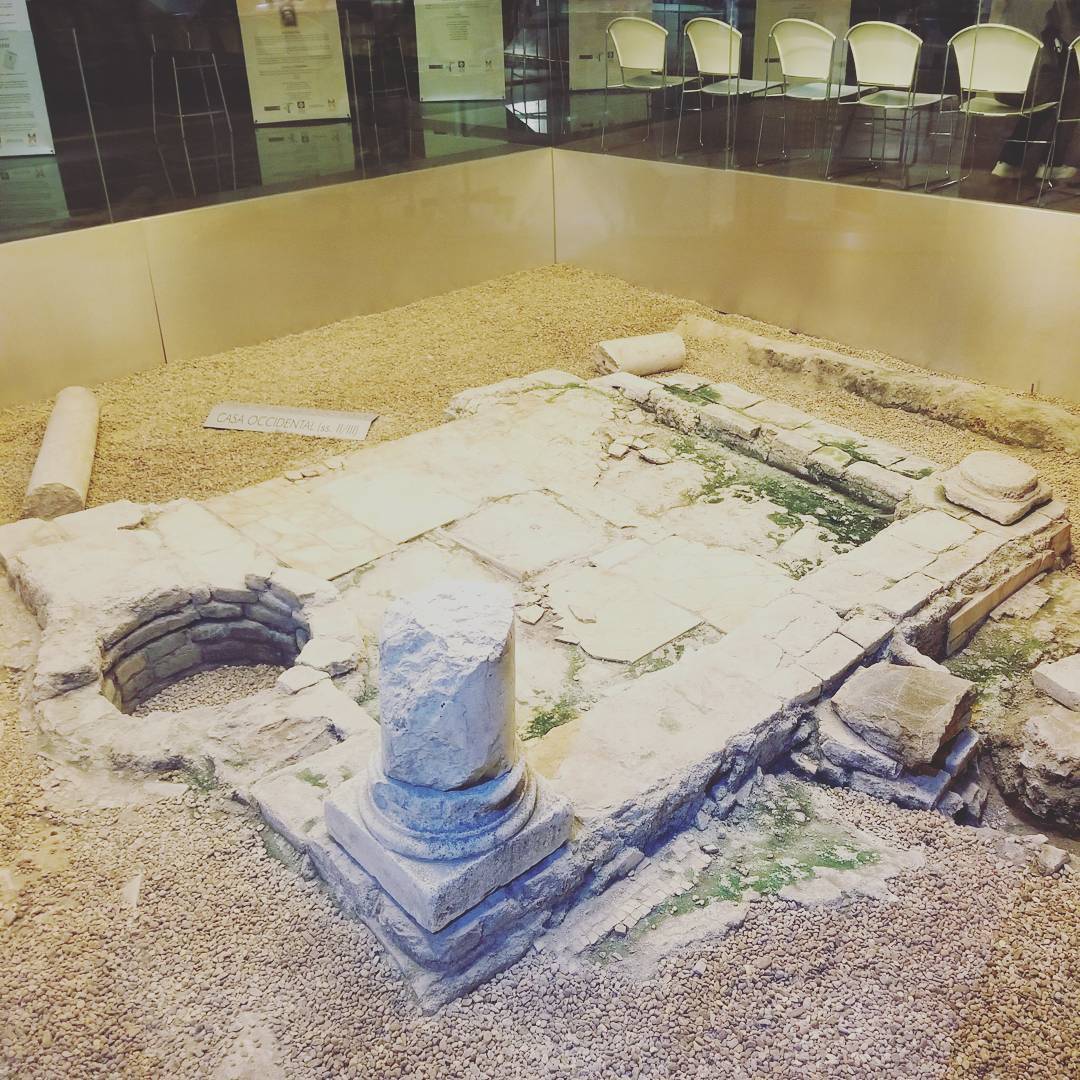
Once back on the surface we found the area filled with life. Many families were relaxing on the tapas bar patios around the Setas, with the adults eating and drinking while the kids ran around sliding on the base of the pillars and playing soccer in the open areas.
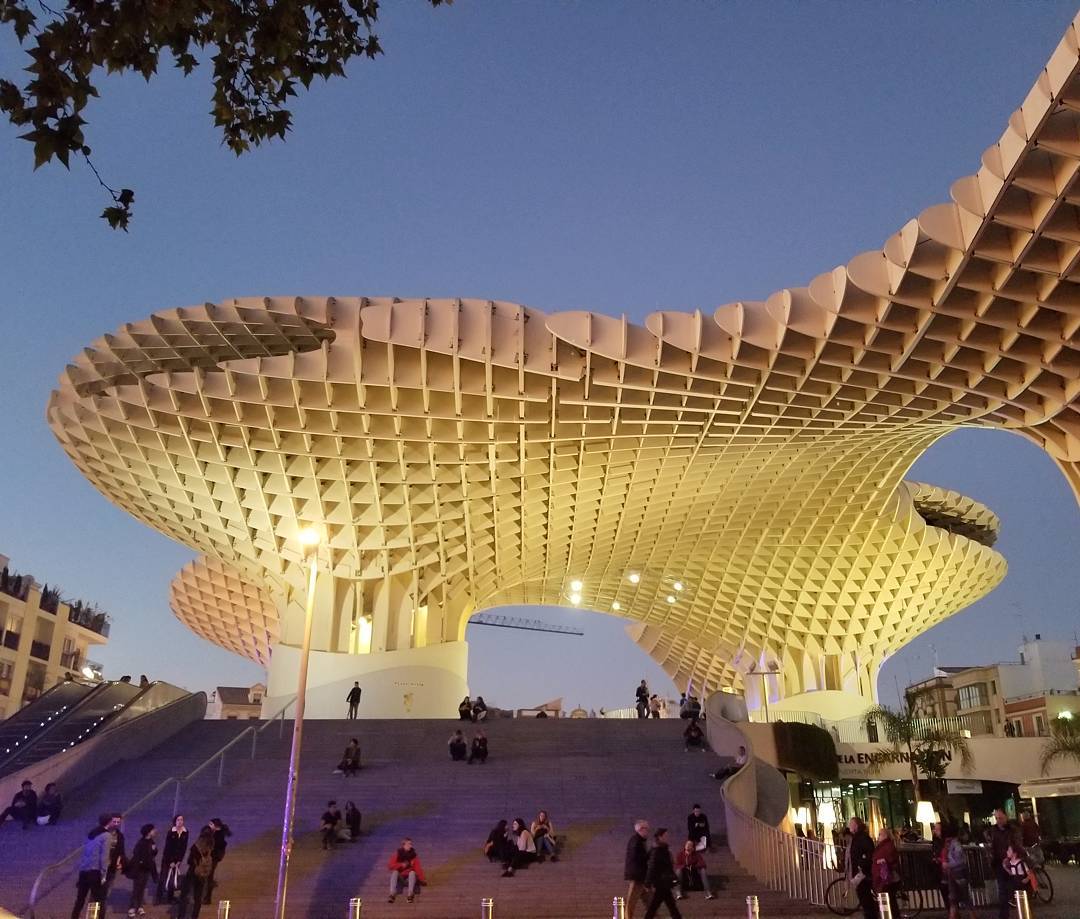
Just beyond the Setas there’s a nice view westwards down Calle Laraña.
